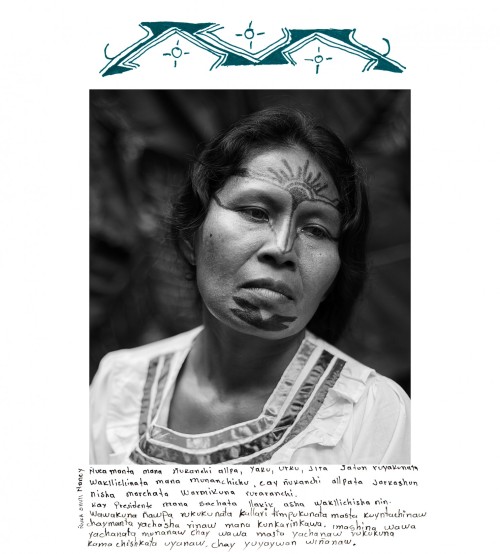thepeoplesrecord:Guardians of life: The indigenous women fighting oil exploration in the AmazonNov
thepeoplesrecord: Guardians of life: The indigenous women fighting oil exploration in the AmazonNovember 8, 2014 On Oct. 12, 2013, a group of nearly 300 women from seven indigenous nationalitiesmarched to Quito, Ecuador, arriving in the capital four days later with their children in their arms, the sharp angles of their faces — young and old — decorated with vegetable ink designs, covered in the same strength and determination with which they began their journey. They were marching to Quito to ask the central government to respect their ancestral lands, to refrain from exploiting the oil that lies beneath his Kawsak Sacha, aliving jungle. In November of that same year, a smaller delegation of women peacefully protested during the 11th Oil Licensing Round, an auction of 6 million acres of ancestral indigenous land for oil exploitation. The protests, however, turned sour when oil executive and politicians scolded protesters, and Ecuadoran President Rafael Correa subsequently demanded the closing of the NGO Fundación Pachamama and indicted 10 indigenous leaders on charges of terrorism. While women have always played an active role in historic marches that marked the struggle for the rights of indigenous peoples in Ecuador, this was the first walk organized and led by women. Felipe Jacome’s set of photos Amazon: Guardians of Life documents the struggles of indigenous women defending the Ecuadoran Amazon through portraits combined with the powerful written testimonies. The words across each photograph are a self-reflectionof the lives of women, their culture, history and traditions, and especially about the reasons for fighting oil drilling on their ancestral lands. The color designs framing eachportrait use the same natural dyes found in face paint to expand on the symbols and designs that reflect their personalities, courage and struggle. “My name is Alicia Mosco. If oil enters our territory, my kids and I — we’re going to die. We get sick, and there is no cure for us.” “My name is Nancy. We want to defend our lands, forests, rivers, mountains and trees where spirits live. We do not want to get hurt, so women have to go to defend the forest. The president does not value and does not know the forest and wants to destroy it. Our children know the life of our ancestors through conversations with elders, so they learn to love the jungle.” “My name is Jimena. As a Shiwiar woman, I love my country. To my nature, I love my animals, my monkey, my fish, my rivers, air that gives us life. For this reason, we do not want to exploit the oil in our territory.” “My name is Simona. This is our land. These drawings symbolize wealth that exists in the forest. This government has no conscience. Why do they mistreat us? Our community is not going to stop fighting, though we are the last to continue the fight standing strong.” Source -- source link
Tumblr Blog : thepeoplesrecord.tumblr.com



